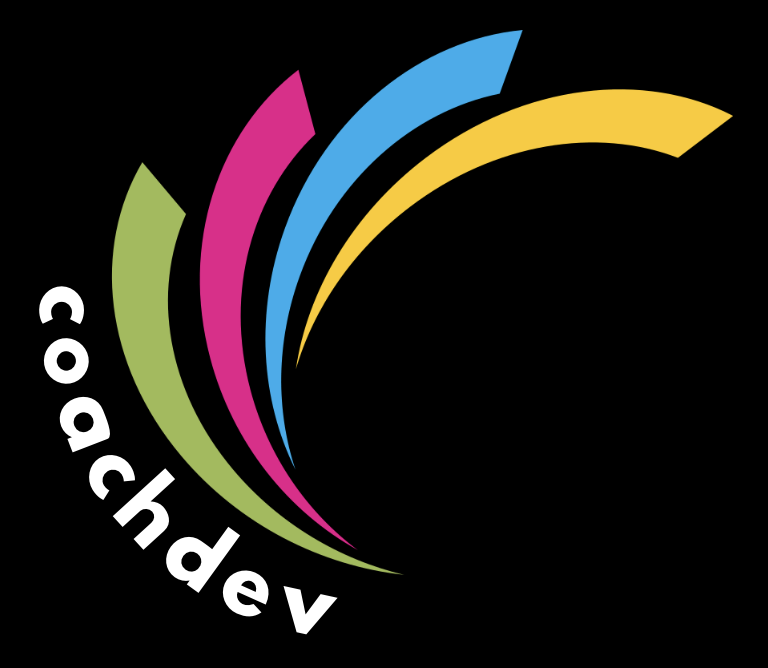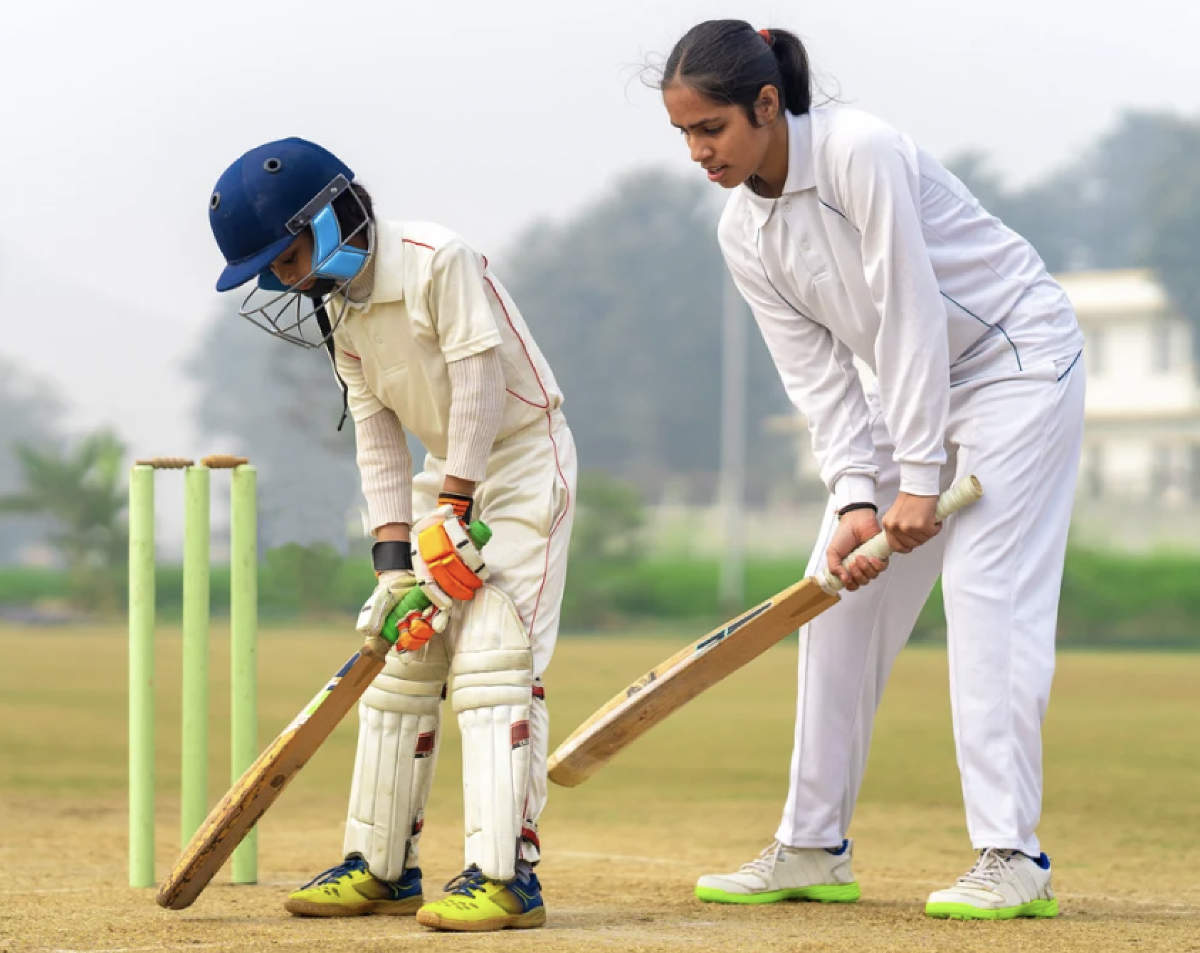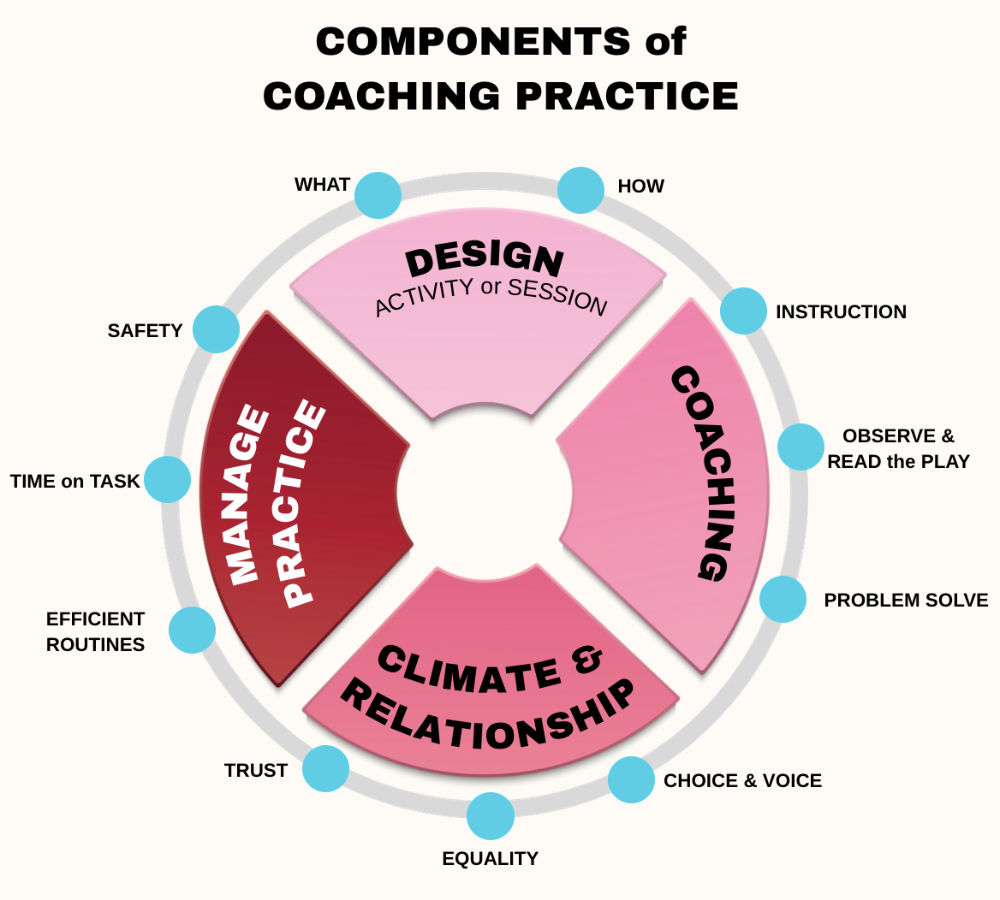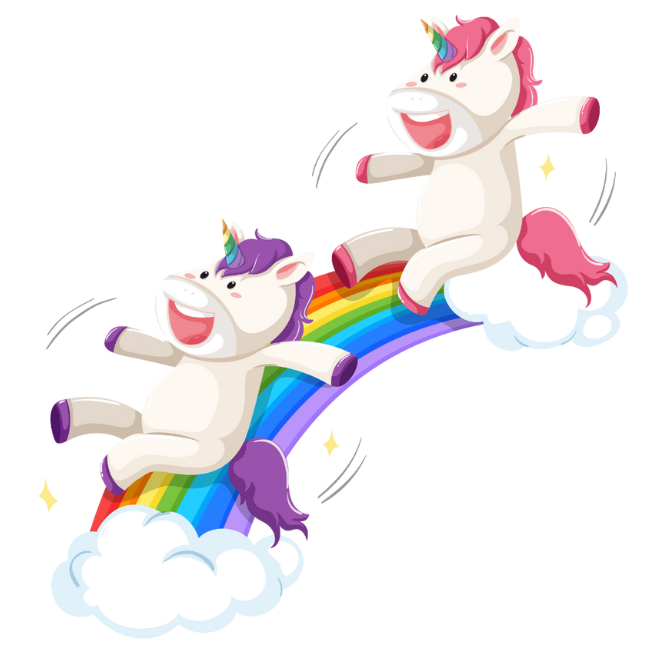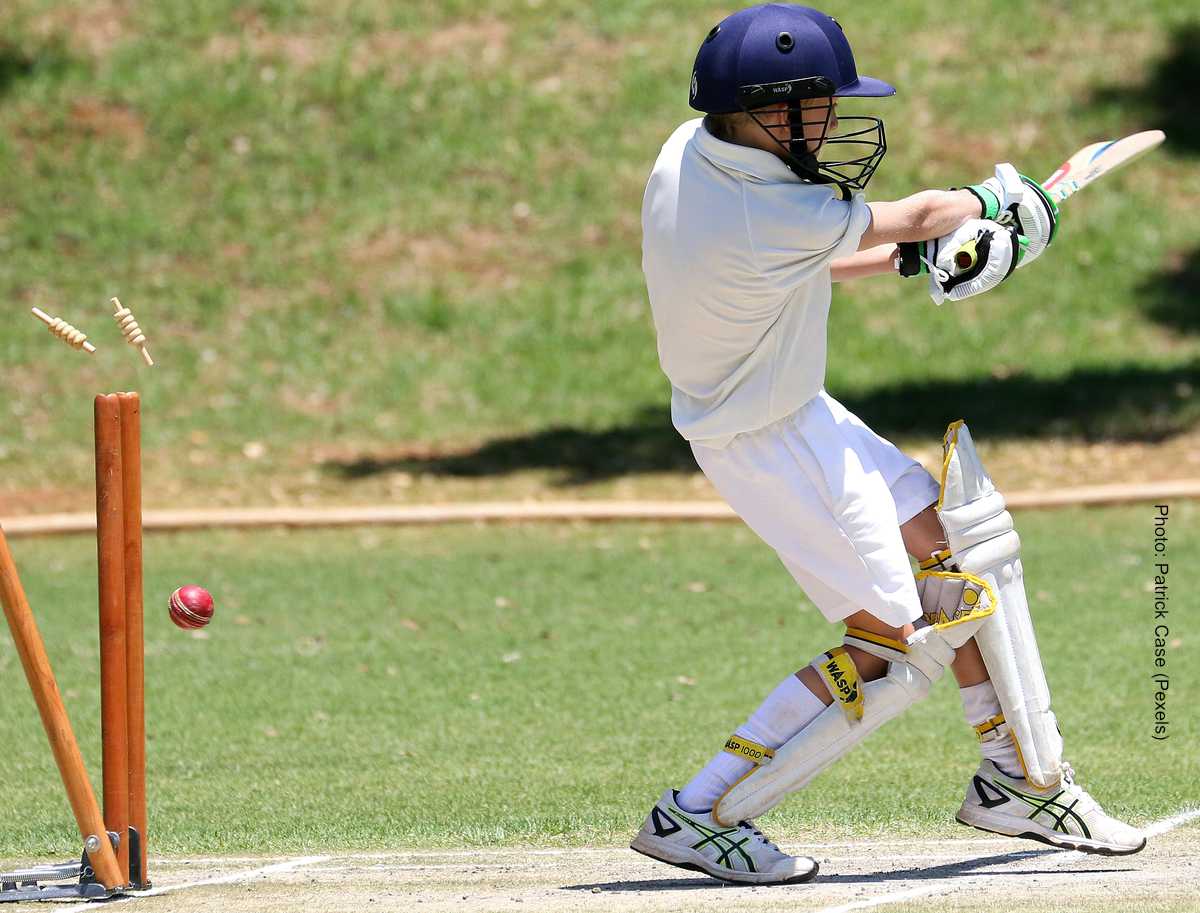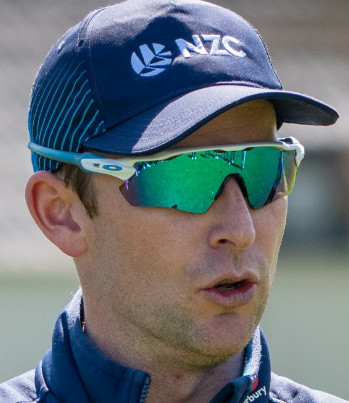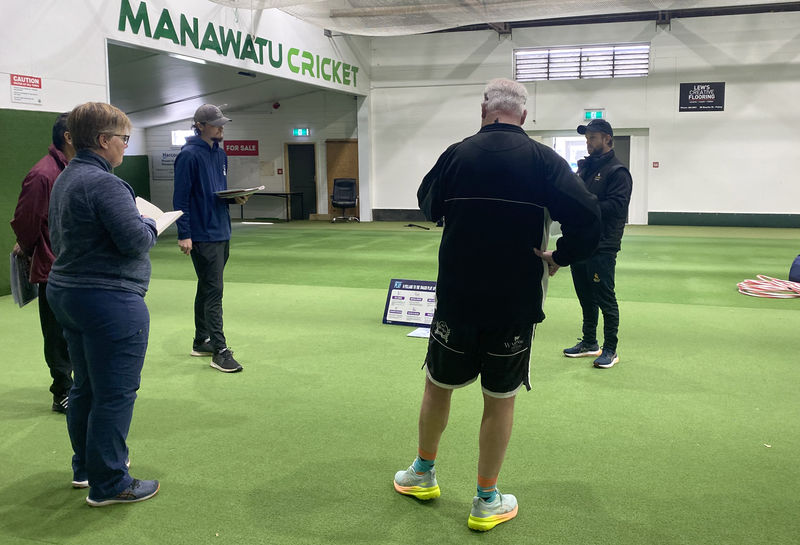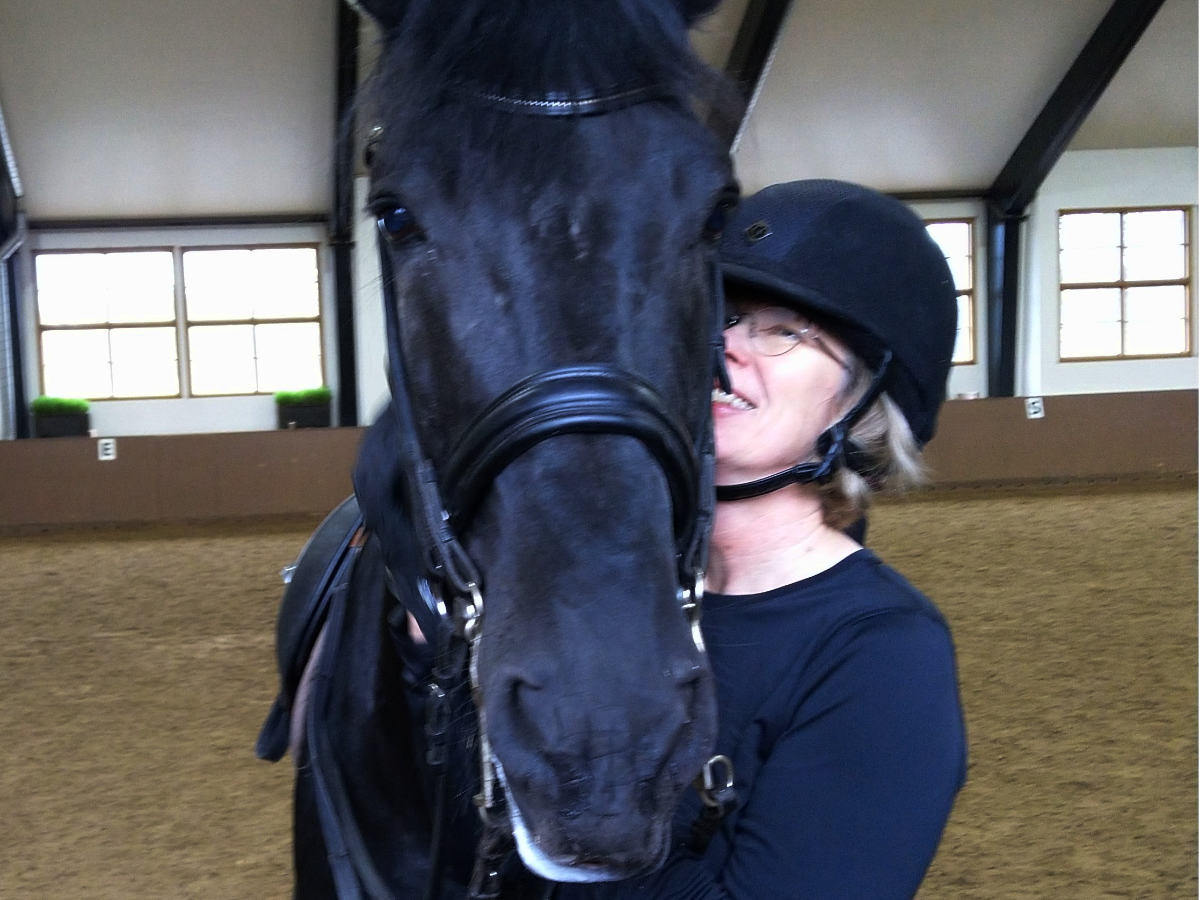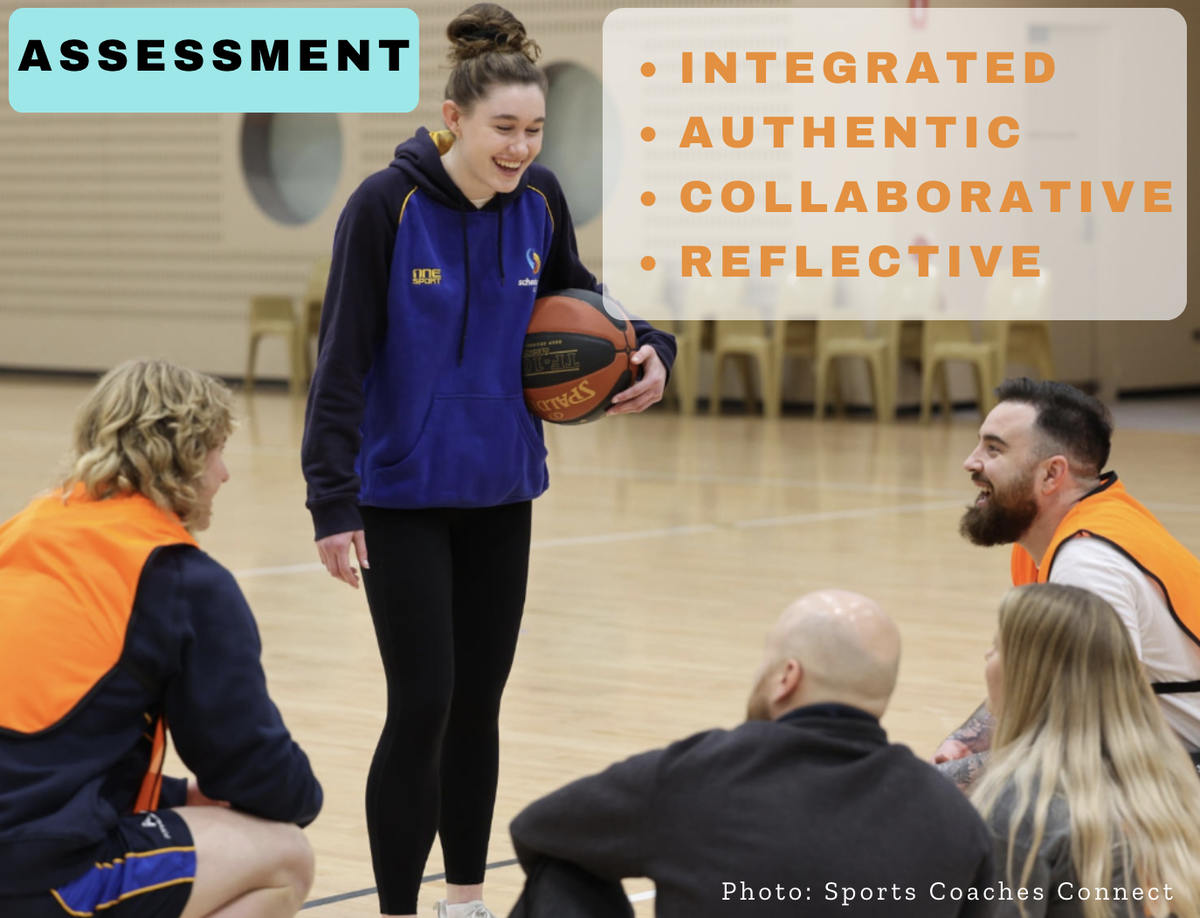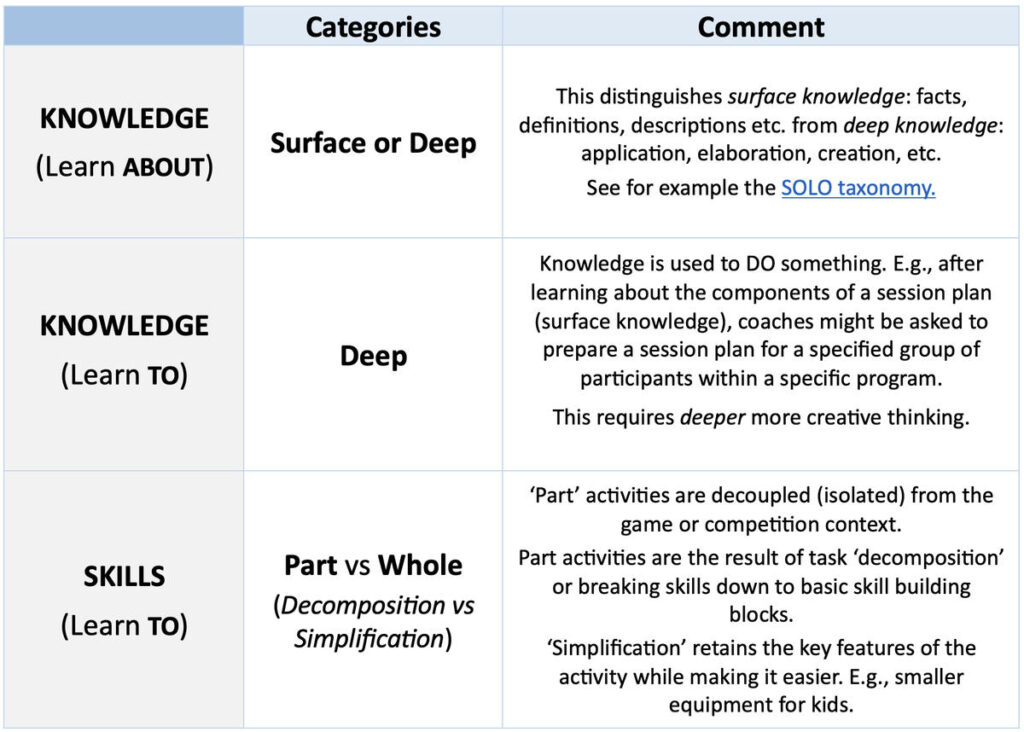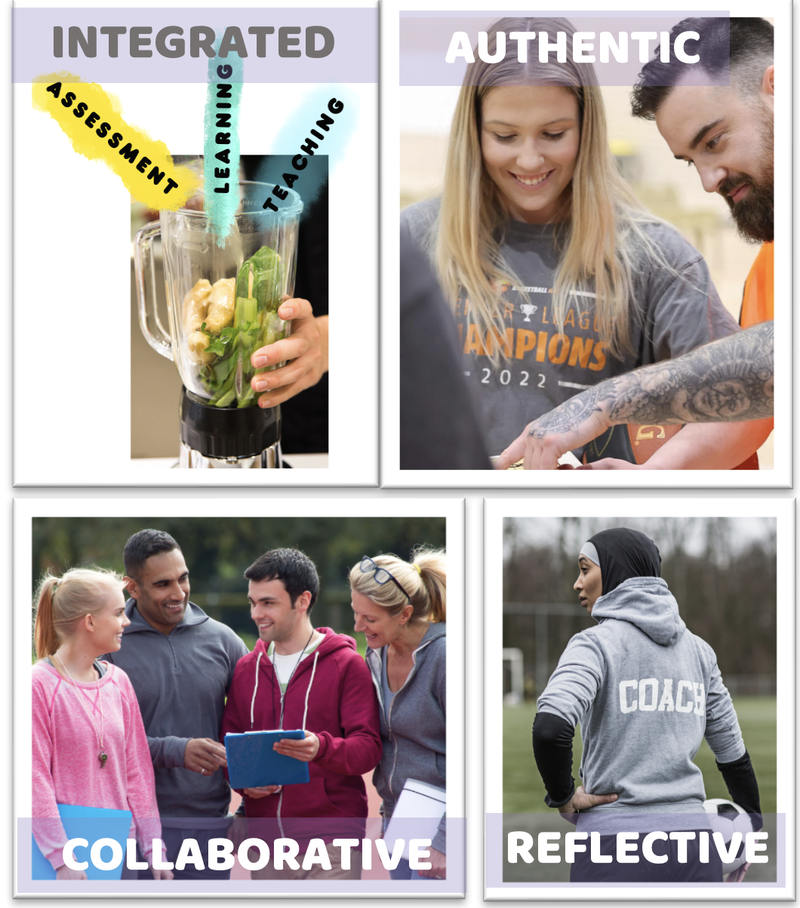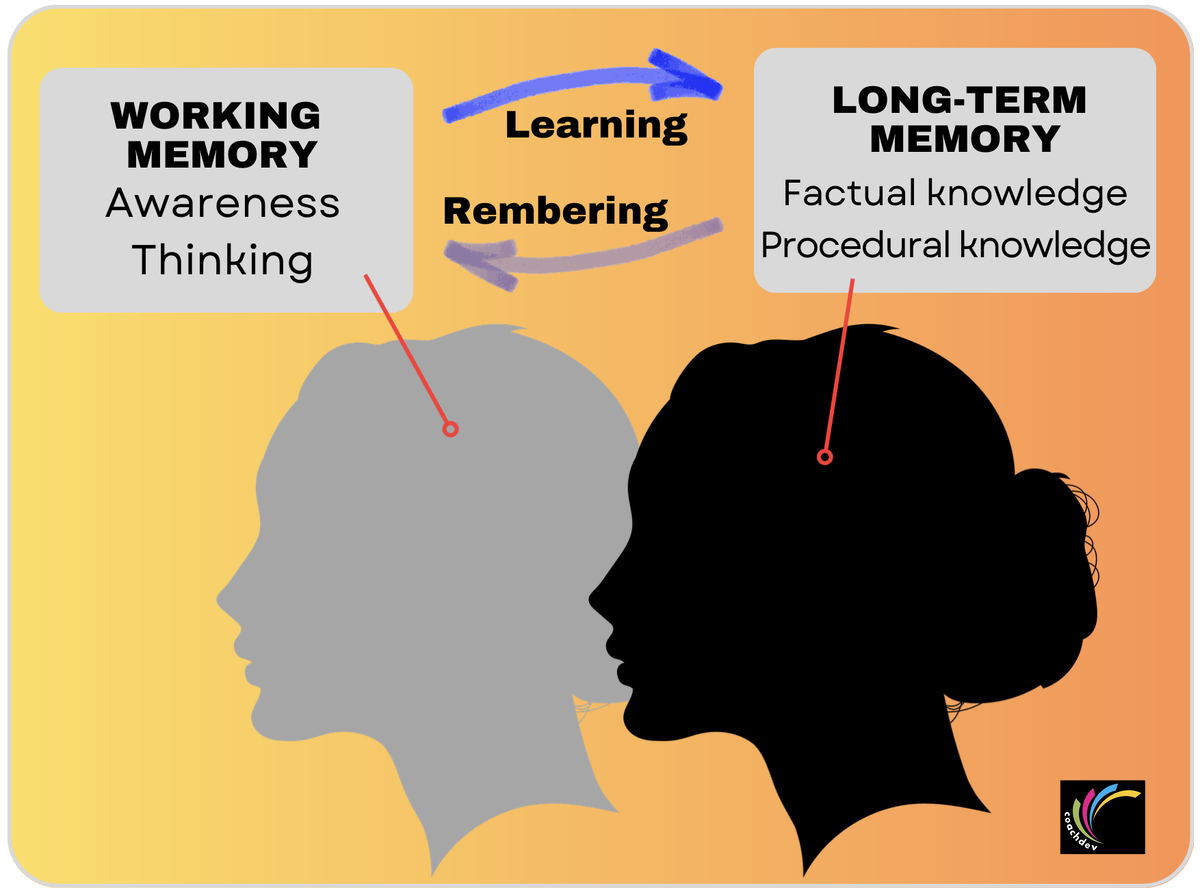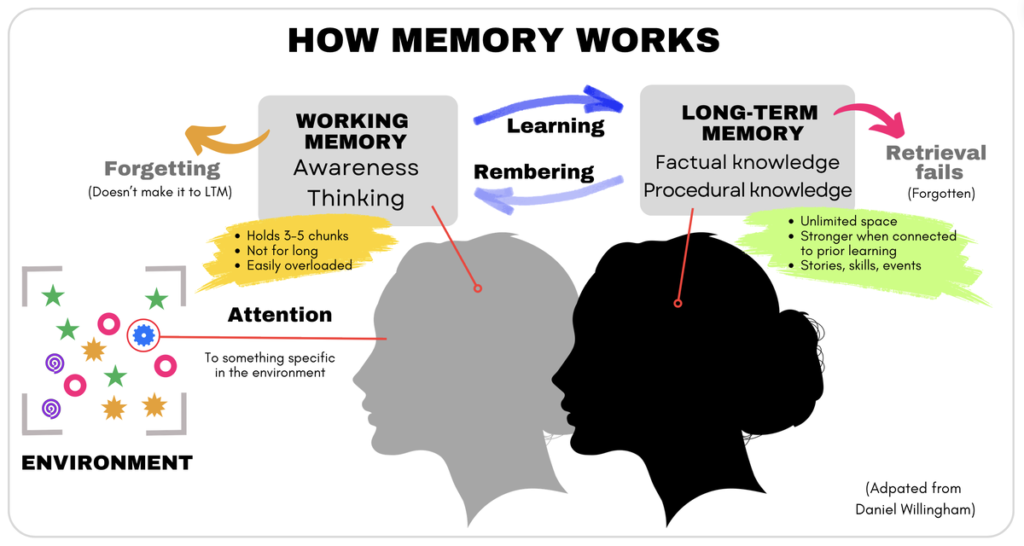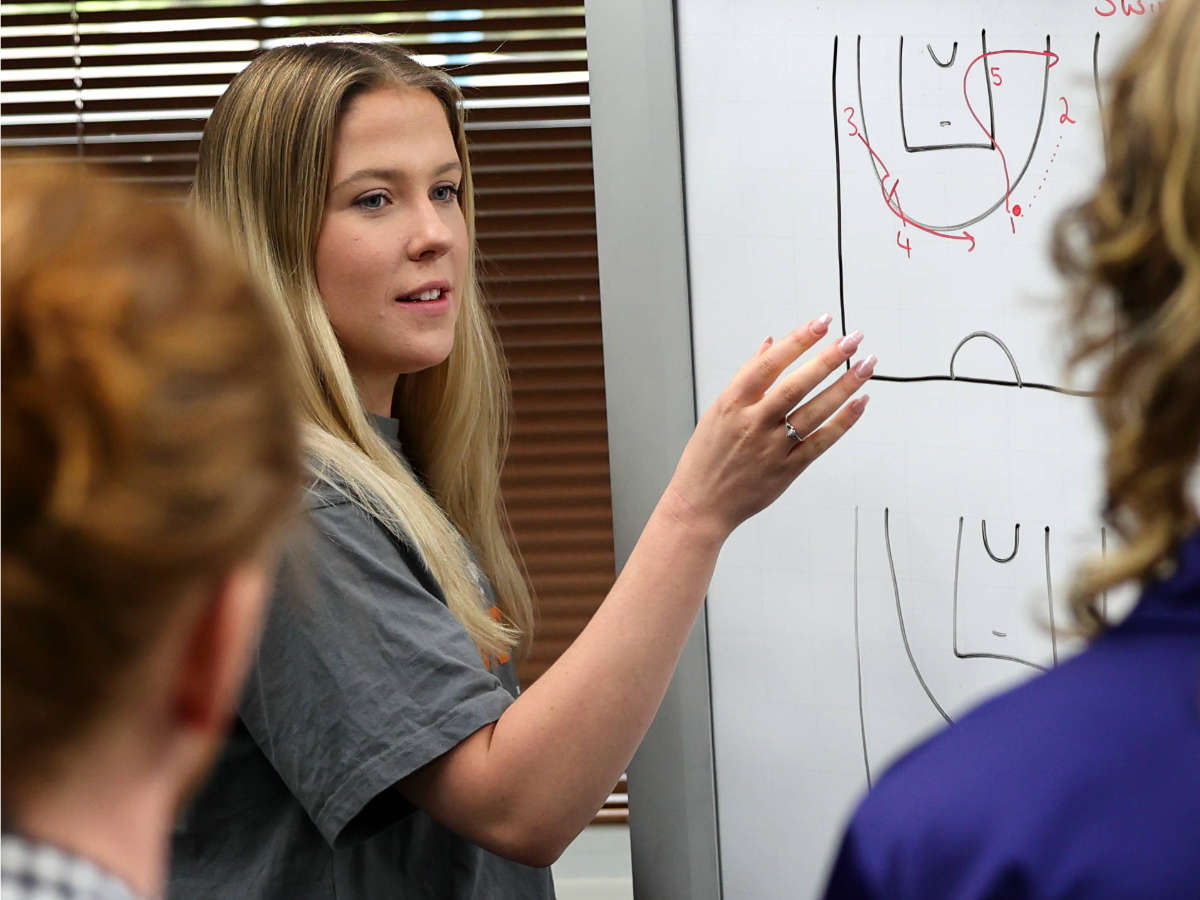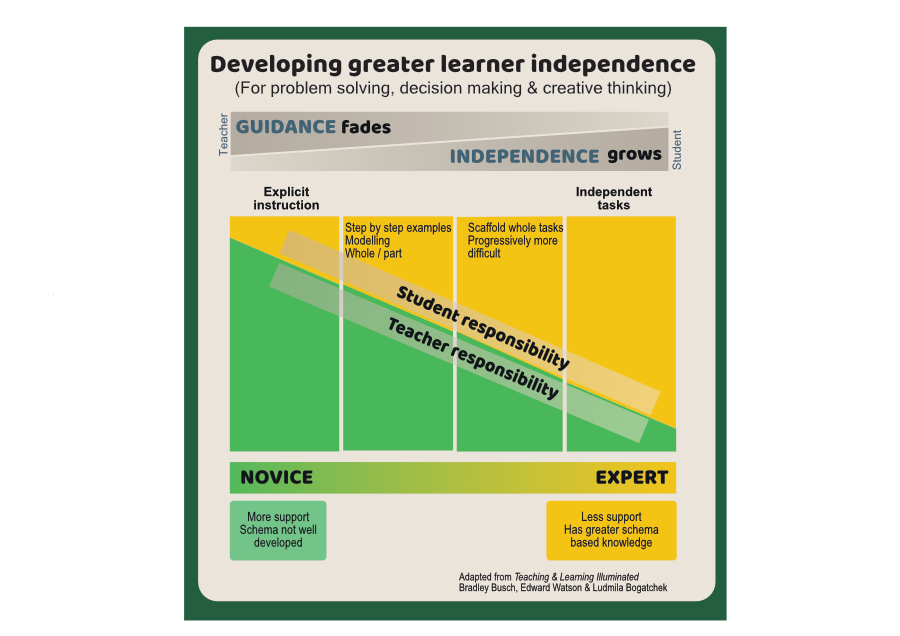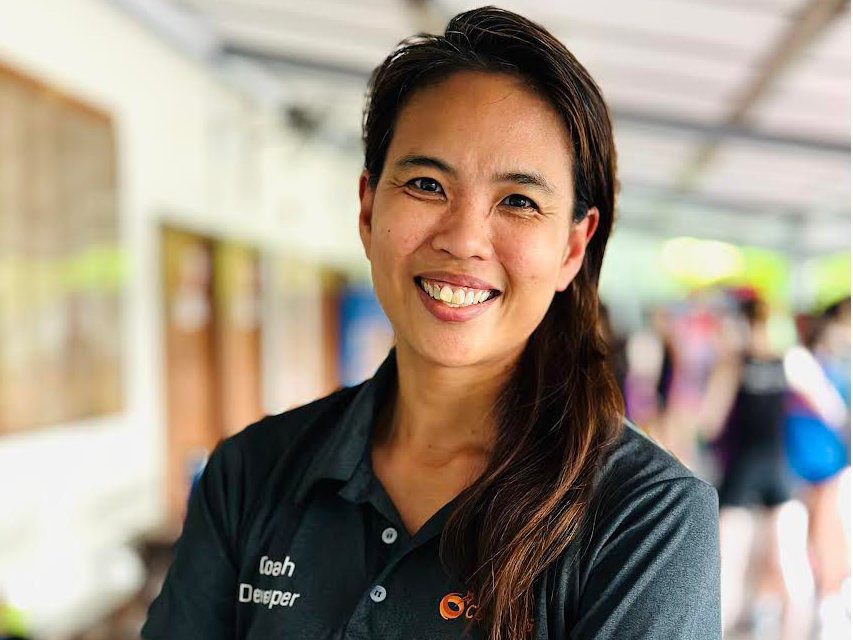Feedback is only as good as the receiver’s willingness to accept it and their ability to do something with it. Effective feedback involves a partnership. In this post we will focus on the receiver and what we can do to create conditions conducive to the acceptance and application of feedback by the receiver.
HANDOUT: A comprehensive handout for CDs & coaches can be found here. It contains lots of practical tips on helping learners fine tune receiving feedback.
FEEDBACK: A SHIFT in EMPHASIS
It is all too easy to think that feedback is the same as telling. In this view of feedback an expert provider of feedback makes observations, judgements and tells or shows the learner what to do to drive the learning forward.
The ‘telling’ view of feedback often requires the giver to follow a script or a set way of giving feedback. If only it was that easy!
The ‘feedback sandwich’ (bad-news sandwich) approach to giving feedback is an example (1) of a feedback recipe that is often ineffective diluting the impact of information useful to the learner. Also see here and here for more on the feedback sandwich.

GIVING is NOT RECEIVING
What the provider of feedback does and says is important but only if proper attention is paid to the recipient. The recipient needs to be open to receiving feedback, understand it and have the skills to act on it.
No matter how skilful the giver of feedback is, it is critical that the giver / receiver relationship is one of respect and trust. Dylan Wiliam and Siobhán Leahy in their book Embedding Formative Assessment (1), say
While the quality of feedback does make a difference to how students will respond, what is far more important is the continuing relationship you have with your students, and how they see themselves as learners. (p108, emphasis added)
Notice how the quote shifts the discussion to what the receiver thinks and does (how they see themselves as learners). Giving is not receiving (2).
We often teach people WHAT to learn but not HOW to learn.
THE PILLARS THAT SUPPORT RECEIVING FEEDBACK
Are your learners ready to do something with your carefully thought-out feedback? Here are two preparatory steps that will help to prepare your learners to effectively use your feedback:
- Build trust and respectful relationships.
- Provide learners with choice and a voice.
With these foundations, your learners will be better equipped to make decisions and influence outcomes (exercise their agency) related to their learning.
Genuine relationships and empowering learners are important pillars of becoming a better receiver of feedback. These ideas are summarised in the graphic.

You may be thinking this looks like the language of a learner-centred approach. You are spot on. The principles are the same for CDs working with coaches or coaches working with athletes. Yes, time is required to build trust and foster independence.
Ideas for fostering a learner-centred approach are summarised here. I developed this for Gymnastics Australia with input from Michelle De Highden.
HOW to HELP LEARNERS USE FEEDBACK
Feedback can be a powerful teaching intervention, but it doesn’t always lead to improvement and may do more harm than good (6). How the learner reacts depends on how they interpret and value the feedback. How can we look at feedback from the receiver’s point of view?
The answer lies in the giver tuning into what the receiver says (or doesn’t say) and how they respond – does the learner seem motivated or bored; eager to learn or uninterested?
- Look for the body language they display. It provides useful feedback to the giver of the feedback. Respond to these subtle (sometimes not too subtle!) messages.
- If feedback is given to a group, some of the receivers may think it doesn’t apply to them. Be clear about the intended receivers. Open up a direct line of communication with eye and voice contact.
BARRIERS to RECEIVING FEEDBACK
If an athlete sees their whole identity in their sport, then feedback is likely to be received as a personal attack. The athlete with guidance from the coach needs to learn to separate what they do (sport/skill) from who they are as a person.
A second group (which sometimes overlap) who may struggle with receiving feedback are the ‘naturally talented’. This group may include athletes with a fixed mindset.
Reframe feedback as an integral part of learning which is not simply about telling but about collaborating and owning. This is a strategy to shift feedback away from the personal.
SEPARATE the SIGNAL from the NOISE
A receiver of feedback can easily be distracted by noise. The giver may display ‘annoying’ personal mannerisms. Their approach may appear overly confident, bossy or give the impression of being a know-all. The giver who is the source of unwanted noise may cause the receiver to dismiss part or all of the feedback.
The other side of the coin is the giver who is attractive in their manner – a cool communicator. This version of noise may lead the receiver to too easily accept the feedback uncritically bypassing a discussion with the giver that focusses on how the feedback is relevant to the immediate context of the receiver.
Preparing receivers to look beyond the noise will help to ensure important guidance is not lost. An accessible reference with more information on the importance of distinguishing between the message and the messenger and other points related to receiving feedback is available here.
THREE POWERFUL FEEDBACK QUESTIONS
A good way to see feedback from the receiver’s perspective is through the use of three powerful questions. John Hattie a New Zealander and cricket enthusiast now living in Australia, wrote a paper with a fellow researcher Helen Temperley (also a New Zealander) in 2007 (3).
They posed 3 questions that effective feedback must answer. These are shown in the graphic below:

More explanation about the 3 questions and a heap of other of other useful links to online references about feedback can be found here.
The 3 questions provide a platform for givers of feedback to engage the receiver in a way that makes the sharing of feedback a two-way formative activity. This involves the giver explicitly teaching the receiver how to make sense of the 3 questions.
Developing a common language takes time. It is certainly not a one-off instruction.
CHECKING for UNDERSTANDING helps to engage the receiver in their own learning allowing them to develop reflective tools to apply to all their learning as they become more autonomous learners.
When coaching skills and games, checking on what the learner sees, feels or can demonstrate are often good ways of showing understanding and may be more effective than a longer verbal response. Extend the vocabulary of feedback to include words related to timing, position, space and proprioceptive / kinaesthetic awareness.
An expanded version of the 3-questions graphic including a summary of specific strategies can be found here for downloading.
ROOT OUT the ROOT CAUSE
It is important that the athlete has the skill to do something about the coach’s feedback. This means coach and athlete have to see the root of the underlying problem.
So, in all feedback situations, the coach has to ask, “am I giving feedback on the problem I see, or the underlying cause of the problem?” If the answer is, “yes” to the former, then the feedback is unlikely to bring about any meaningful or long-lasting change.
This consideration is more important in an athlete training / practice situation than in a knowledge acquisition context such as a coaching course.
ADJUST for the STAGE of the LEARNING CYCLE
The role of the CD or coach in preparing the receiver to more effectively use feedback will depend on where the receiver (learner) is in the learning cycle (4). By adjusting the feedback to the receiver’s stage, coaches can support the learner’s progression, minimise cognitive overload and foster autonomy.
Along with ensuring a good match between feedback and the receiver’s readiness for that feedback, scaffolding (providing initial support and then gradually removing it), is a way of managing cognitive load.
A constraints approach to coaching is a useful coaching approach that manipulates the learning environment / task in a way that scaffolds learning.
The table below summarises how feedback can be adjusted for novice and expert learners.

MAKE ADJUSTMENTS for YOUR CONTEXT
Treat the above table as starting point and not a coaching prescription. As we saw above, the receiver’s disposition (attitude to learning) is a powerful influence on how feedback is received. The giver of feedback should always be open to using their professional judgement to modify advice such as that shown in the table above.
While a self-evaluation / reflective approach is more typical of expert learners, this should not stand in the way encouraging all learners (even novices) to be reflective and see themselves as key players in their own learning.
Caution - generic skills are hard to teach
It is important to keep the focus on the goal of the learning whether it’s skill related, or knowledge related. Learning HOW to learn is very important. This post highlights the importance of the receiver’s skills to make the most of feedback – an important learn-to-learn skill.
But there is a caution. It is generally more effective (5) if these generic learn-to-learn skills related to feedback are closely integrated into the whatever the goal of the learning is, and not to make a big fuss about teaching in isolation how to manage feedback.
CONCLUSION
This post has outlined a mental model of feedback that places more emphasis on the role of the receiver than might be done in more traditional approaches to providing feedback. This model of feedback emphasises the importance of the receiver being ready to receive feedback and having the skills to process it. Three references below provide the basis for this post (1-3).
For the CD or coach with experience in giving feedback the challenge is to ensure they also provide a climate where feedback will be both welcome and the receiver has been taught to use the feedback.
Fostering a growth mindset in learners is about normalising the idea that mistakes are central to learning and when a learner is in a learning pit there are strategies and help at hand to get them out. (For more about growth mindset click here.)
Supporting persistent attempts by the learner, helping learners to understand that we all learn at different rates, encouraging questions when help is needed, and letting learners know all of us have times when we are not on our ‘best game’, are all part of nurturing a positive disposition towards learning – an outlook that is more attuned to receiving feedback. Strategies for climbing out of the pit.
Learning is mercurial. It doesn’t always ‘follow the rules’ of whatever the latest ideas are about how learning works. By avoiding putting people (coaches or athletes) into tidy boxes, we grant ourselves the necessary flexibility to read the situation in front of us and respond accordingly. Even when this goes against the conventional wisdom.
We finish where we started with a quote from John Hattie and Shirley Clarke (2, p.83), reminding us of the importance of trust developed between the giver and receiver of feedback:
Students need the knowledge that the teacher cares about and likes them, that they are safe, that peers will not disparage them, that they will not lose face if they ask a question and will be treated with respect.
Are these ideas you already incorporate in your teaching / coaching? If this is new territory for you, what are one or two things you might experiment with to bolster the receiver’s involvement in the feedback process?
REFERENCES
- Wiliam, Dylan & Leahy, Siobhán. (2015). Embedding Formative Assessment, (p. 124). Learning Sciences International.
- Hattie, John & Clarke, Shirley. (2019). Visible Learning Feedback, (p.89). Routledge.
- Hattie, J. & Temperley, H. (2007). The Power of Feedback. Review of Educational Research, 77(1), 81-112. https://doi.org/10.3102/003465430298487
- The term learning cycle can mean many different things. In this post it is used to differentiate between:
- The early stage of learning something new.
- Consolidate the learning with practise and build a more robust mental models and motor memories. The aim is to reinforce correct elements and refine technique, improve decision making and understanding.
- Transfer or apply the learning by transferring it to novel situations and different contexts. Learners will better understand the why behind what they are doing. The aim is automatise the learning and improve adaptability in varied contexts.
5. Willingham, D.T. (2007). Critical thinking: Why is it so hard to teach? American Educatory, 31(2), 8-19.
6. Kluger, A.N., & DeNisi, A. (1996). The effect of feedback interventions on performance. Psychological Bulletin, 119(2), 254-258.
A big thanks to the reviewers who also contributed ideas: Melanie Schembri Waite, Lawrie Woodman, Andrea Woodburn and Kirsi Hämäläinen.
